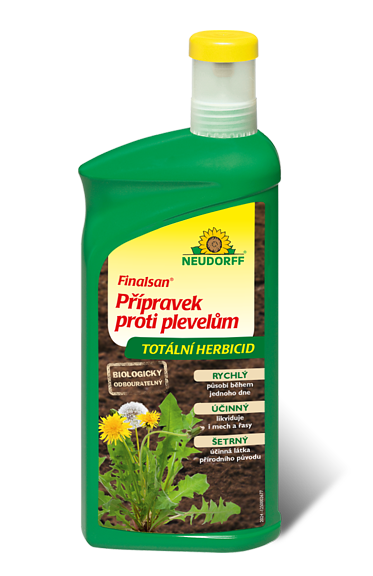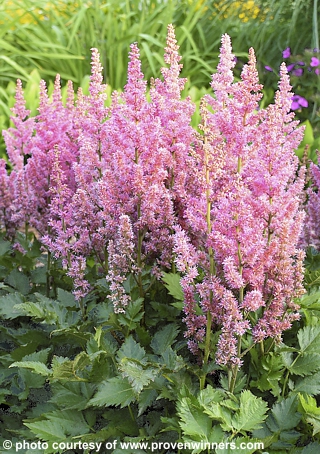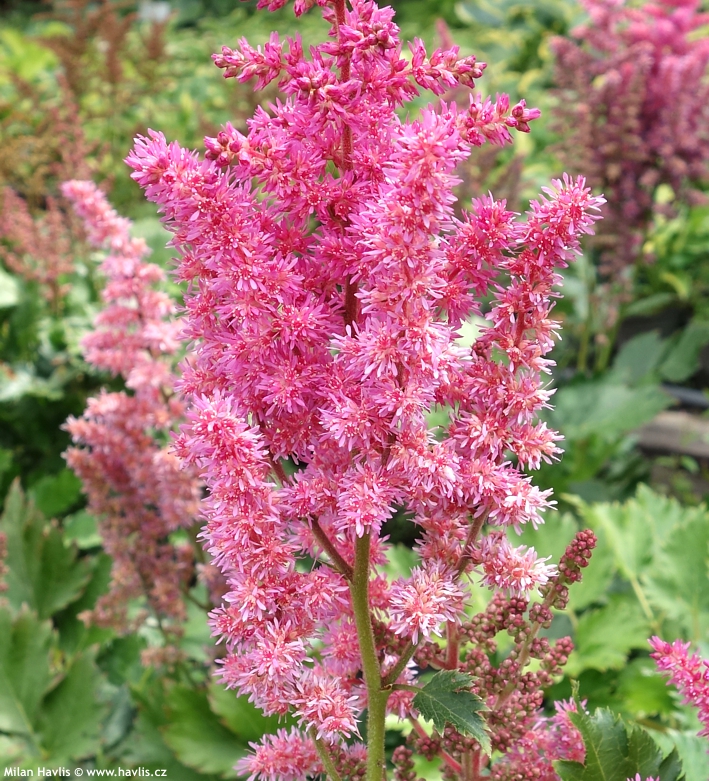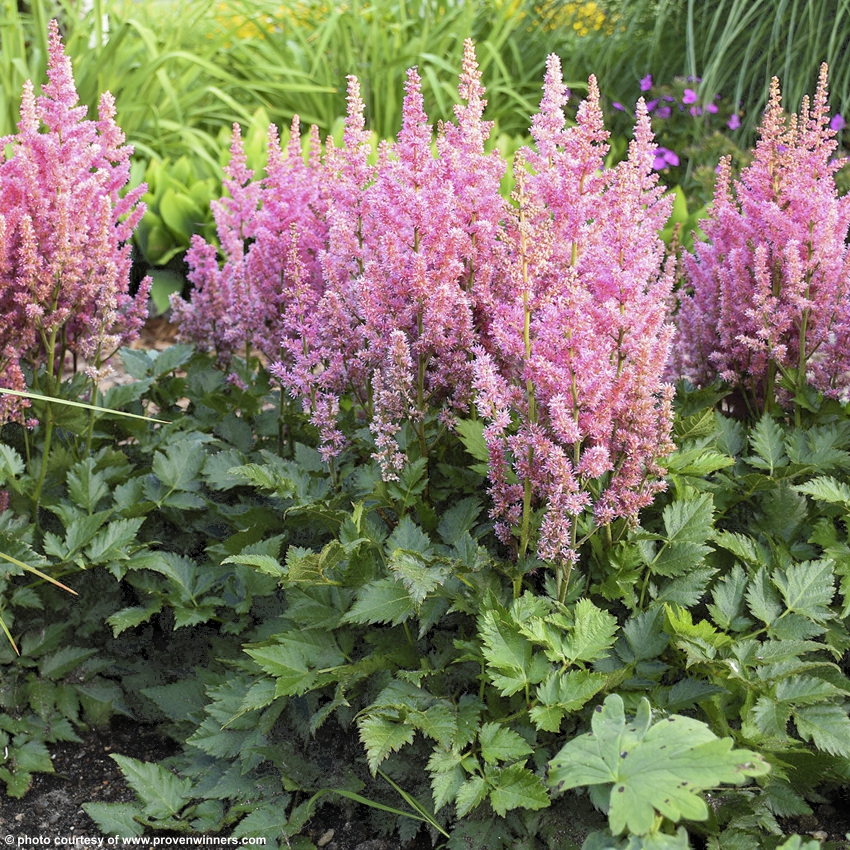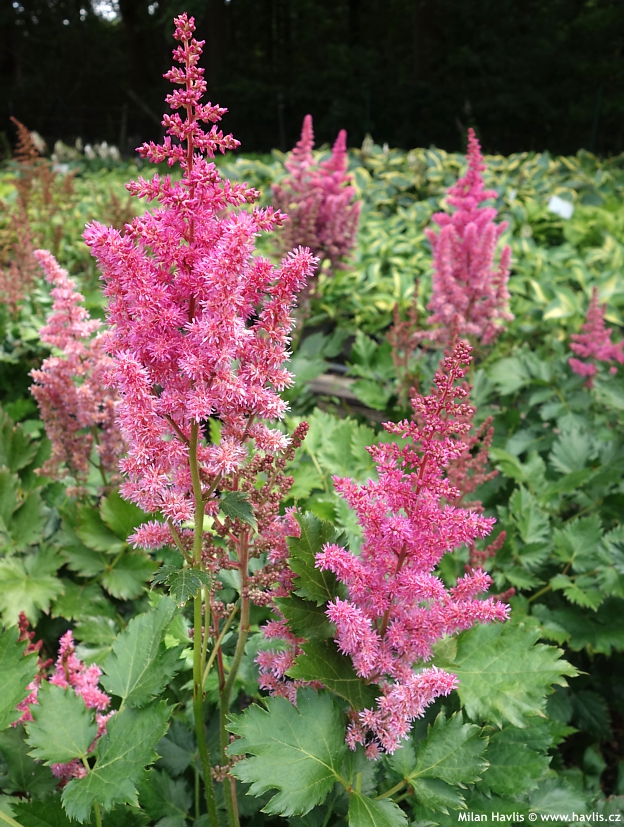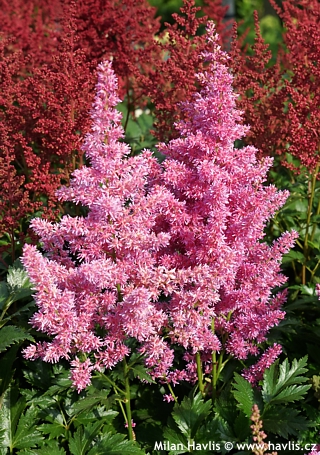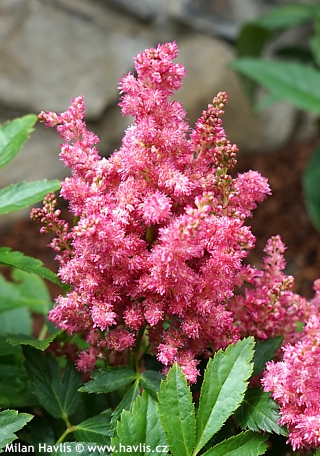Astilbe 'LITTLE VISION IN PINK' astilbe (arendsii group)
Astilbe
Astilbe series Vision is bred by Wilhelmus Franciscus van Veen from the Netherlands with the aim of achieving the richest colours, profuse flowering, and at the same time beautiful leaves that adorn the plant for the rest of the season when it is not in bloom. These are mostly hybrids of a. chinensis and a. arendsii. Little Vision In Pink variety is a hybrid of Vision in Pink and unnamed seedling of dwarf habit, and it was granted a US patent No. PP21886 in 2011.
Little Vision In Pink is a dwarf astilbe with dense and congested inflorescence of clear pink colour. Its strong stems grow only some 30 cm tall which is unusual for a Chinese astilbe hybrid. It forms compact tufts with lots of healthy, dark green and glossy leaves. Blooming begins in late June and continues for almost two months.
Grow astilbe in humus-rich soil. If planted in boggy or regularly watered bed they can sit in full sun, too, otherwise choose a semi-shaded or shaded location. They are water loving plants and require a good dose of nutrients to look their best. They will not grow in chalky or clay soil that dries out in summer.
For best results divide the clumps every 3-4 years removing old and dead rhizomes in early spring. Also in the spring remove old leaves and last year’s flowers. If grown in poor soil you may need to cut back the entire plant after flowering to get rid of spent stems and tired foliage in order to encourage growth of new leaves. A dose of a liquid fertilizer is recommended. Fully hardy to min. -29 °C (USDA zone 5).
Last update 28-09-2022






























